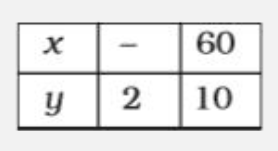The resistance of a copper wire varies directly as .............and inversely as.........
length (l) area of cross section (A)
Similar Questions
The resistance of a wire is directly proportional to its length and inversely proportional to the square of its radius. Two wire of the same material l have the same resistance and their radii are in the ratio of 9:8. If the length of the first ire is 162 cm, find the length of the other wire.
View SolutionThe resistance of wire is directly proprtional to its length and inversely proportional to the square of its radius .Two wires of same meterial having the same resistance and their radii are in the ratio 9:8 .If the length of the first wiere is 162 cm then , find the length of the other wire .
View Solution
Knowledge Check
Statement I : The resistance of a copper wire varies directly as the length and diameter.
Statement II : Because the resistance varies inversely the area of cross-section.AIf both Statement- I and Statement- II are true, and Statement - II is the correct explanation of Statement– I.BIf both Statement - I and Statement - II are true but Statement - II is not the correct explanation of Statement – I.CIf Statement - I is true but Statement - II is false.DIf Statement - I is false but Statement - II is true.If the resistance of a certain copper wire is 1Ω, then the resistance of a similar nichrome wire will be about:
A25ΩB30ΩC60ΩD45ΩWhen the resistance of copper wire is 0.1Ω and the radius is 1mm, then the length of the wire is (specific resistance of copper is 3.14×10−8ohm×m)
A10 cmB10 mC100 mD100 cm
Inverse variation (in mathematical form).
View SolutionIf x varies inversely as y, then

View SolutionIf x varies as yz, then y varies inversely as
View SolutionCalculate the resistance of 1km long copper wire of radius 1mm. Resistivity of copper is 1.72×10−8Ωm.
View SolutionWhen the resistance of copper wire is 0.1Ω and the radius is 1mm, then the length of the wire is (specific resistance of copper is 3.14×10−8ohm×m)
View Solution
